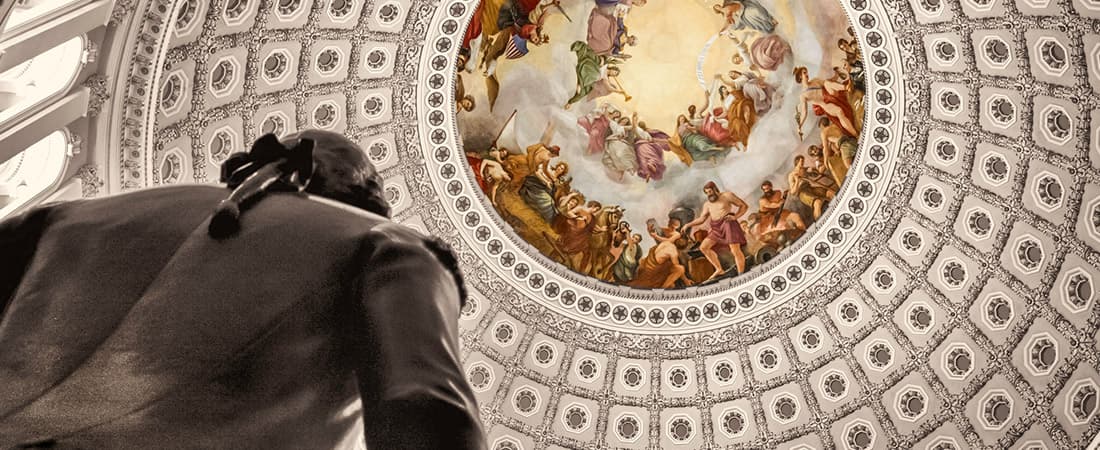Sep 01, 2017
The Debt Ceiling: What It is and Why It Matters
We explain what happens when the federal government doesn’t have enough money to pay its creditors.

At the end of September, the U.S. government will run into an important financial roadblock known as the debt ceiling.
If that debt limit isn’t increased, the federal government won’t have enough money to pay creditors for what it’s borrowed. As a result, it will also have trouble funding many of the services we all rely on every day–from health services, to the national parks we hike in. Social security payments could also be delayed, as too could payments to troops, and government workers.
And that inability to pay would also create a lot of uncertainty in the economy.
So what is the debt ceiling?
The debt ceiling is a borrowing limit set by Congress. (The last limit was $18 trillion dollars in 2015, when Congress temporarily agreed to lift the debt cap until this year). You can think of it almost like a credit line on a credit card. Once we’ve spent to the limit without paying off the balance, the nation can’t spend any more.
The debt limit is important because, to keep functioning, the federal government has only two sources of income to fund operations: from income taxes and from selling bonds, known as U.S. Treasuries. Unfortunately, there’s always a shortfall between how much money the U.S. takes in from taxes, and how much it spends to keep running. The shortfall is known as the country’s deficit, which adds each year to our national debt, which is just shy of $20 trillion.
To make up for the shortfall, the U.S. borrows, in part by issuing Treasuries, and this borrowed money is used to keep the lights on.
(You can find out more about the biggest buyers of U.S. Treasuries here.)
Default and Other Consequences
Failing to raise the debt limit will have some pretty dramatic consequences, according to various experts–and the federal government itself.
“It would cause the government to default on its legal obligations – an unprecedented event in American history,” the U.S. Department of Treasury writes on its website, adding that default could create another financial crisis that could put the U.S. “right back in a deep economic hole, just as the country is recovering from the recent recession.”
One immediate effect of a default would be a change in the credit rating of the U.S. Nations get credit ratings, much the way people get credit scores, for the way they handle debt.
That’s what happened in 2011, when Congress last battled over increasing the debt limit. The U.S. had its rating downgraded by one of the three companies that score bond debt, which rattled U.S. markets.
Further downgrades could make future borrowing for the U.S. more expensive, which in turn could drive up people’s taxes, and increase interest rates in the U.S., according to financial analysts.
Congress Must Decide
Unfortunately, increasing the debt limit isn’t a simple matter. It’s actually the subject of a big political struggle in Congress, with a bloc of legislators opposed to an increase without significant spending or regulatory cutbacks and concessions.
Nevertheless, Secretary of Treasury Steven Mnuchin has said he thinks the debt ceiling will be increased.
“I have had discussions with the leaders in both parties in the House and Senate and we are all on the same page,” Mnuchin told Reuters recently. “The government intends to pay its debts and the debt ceiling will be raised.”
Credit rating agencies and the markets will be watching closely.
Related articles

financial-news
Apr 07, 2025
Investing During Volatile Times

financial-news
Apr 03, 2025
How to Stay the Course Through Tariffs and Turbulence

financial-news
May 15, 2024
Rebirth of the meme stock craze? 5 brutally honest reasons why you shouldn’t be buying, despite the hype

budgeting
Jan 09, 2024
9 ways to celebrate financial wellness month

financial-news
Nov 09, 2023
What is a Recession?

financial-news
May 15, 2023
The Stash Way: Invest Regularly
By using this website you agree to our Terms of Use and Privacy Policy. To begin investing on Stash, you must be approved from an account verification perspective and open a brokerage account.
